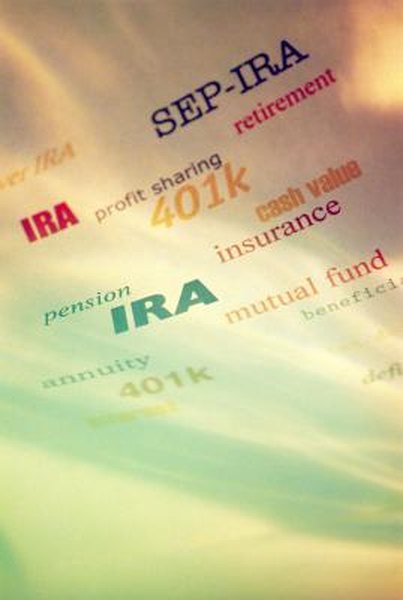How to Withdraw Money From Your IRA After It Has Been Rolled Over
An IRA can offer more flexibility in terms of withdrawals than corporate retirement plans, such as 401(k)s.
Jupiterimages/liquidlibrary/Getty Images
The Internal Revenue Service allows you to move money from one retirement plan, such as a 401(k) plan, to another, such as an individual retirement account, via a rollover. One of the benefits of a rollover is the ability to transfer funds between retirement plans without paying any tax. If you roll over money into an IRA, you can withdraw it whenever you'd like. The fact that the money was rolled over doesn't affect your access to it. Depending on your age and your type of IRA, you may have to pay taxes or penalties when you take money out.
Get a distribution form from your IRA custodian. Your IRA custodian is the financial services firm that holds your IRA assets. As the custodian is responsible for reporting certain transactions to the Internal Revenue Service, you'll have to provide written instructions on a form to take an IRA withdrawal.
Step 2Provide personal information to your IRA custodian. You'll have to confirm your name and address, account number, social security, and possibly other details, such as your phone number.
Step 3Select the reason for your distribution. A "normal" distribution occurs only if you are above age 59 1/2. If you're any younger, your distribution is "premature." Premature distributions typically carry a 10 percent IRS penalty. However, if you qualify for one of the limited exceptions, you can avoid this penalty and take a distribution categorized as "premature with exception." Distribution categories include those due to disability, those for IRA beneficiaries and the return of an excess contribution.
Step 4Choose a payment amount and frequency. You can withdraw your entire balance or specify a certain dollar amount. If you're over 59 1/2, you can usually instruct your custodian to regularly distribute all dividends and interest paid into your IRA. You can also select recurring payments at regular intervals, such as monthly or quarterly. If you're over 70 1/2, you can instruct your custodian to calculate and pay out your required annual distributions.
Step 5Indicate how much tax you want withheld. Most IRA distributions are fully taxable on both the federal and state level, if applicable. The exception is qualified withdrawals from a Roth IRA, which are tax-free. Your IRA custodian will allow you to choose whether you want no taxes withheld from your distribution or a certain percentage. If you don't have taxes withheld at distribution, you can pay them when you file your income taxes. This applies to the penalty and taxes for premature withdrawals as well.
Step 6Request a payment type. Your custodian can either send you a check or electronically transfer your money to another account, via electronic funds transfer or wire. If you choose the electronic option, you'll have to provide a voided check from the receiving bank. Some firms can process an electronic transfer via written confirmation of the receiving bank's routing number and your account number.
Step 7Sign the distribution form. Your IRA custodian will not release your funds without your written authorization. In some cases, you may need to get your signature notarized or "medallion guaranteed," which is a service similar to notarization provided by certain financial services firms.
References
Writer Bio
John Csiszar has written thousands of articles on financial services based on his extensive experience in the industry. Csiszar earned a Certified Financial Planner designation and served for 18 years as an investment counselor before becoming a writing and editing contractor for various private clients. In addition to his online work, he has published five educational books for young adults.

